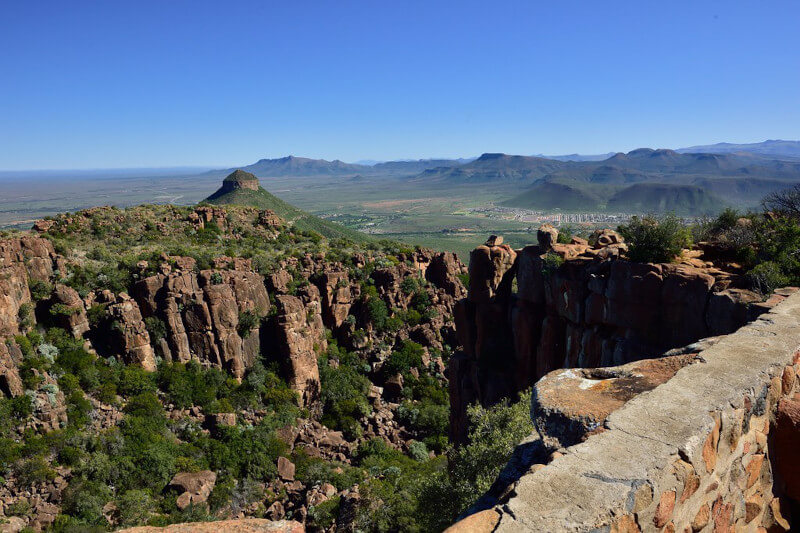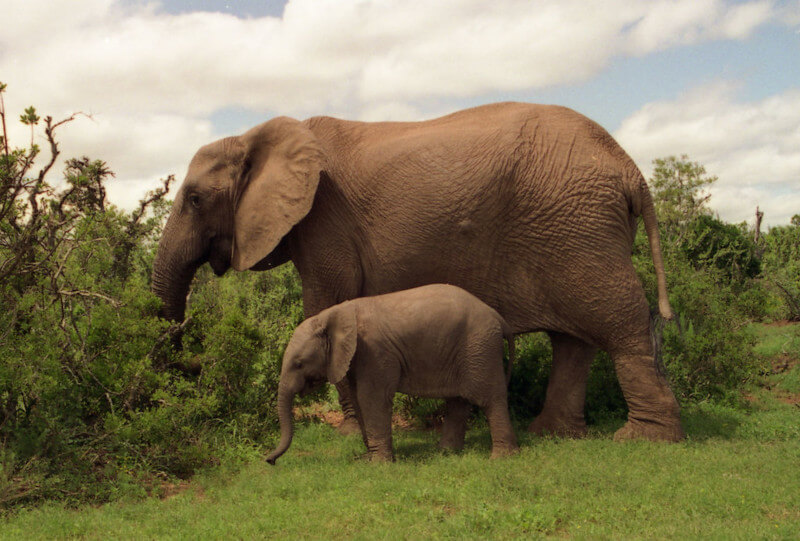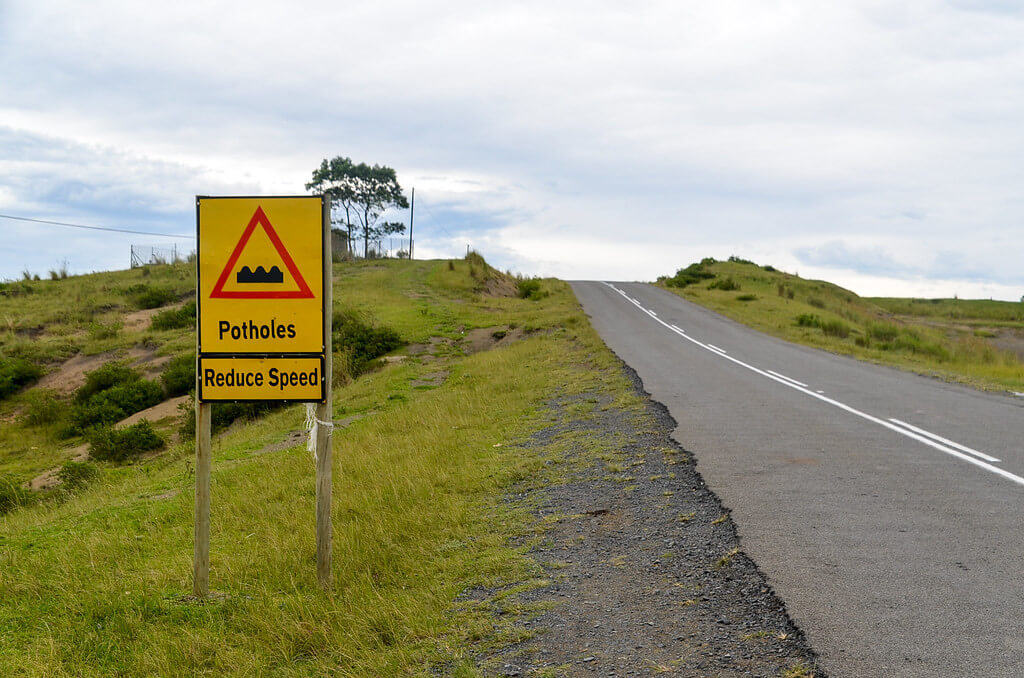There are countless opportunities for scenic drives in South Africa, including the R62 through the Klein Karoo, KwaZulu-Midlands Natal’s meander, and Mpumalanga’s Panorama Route, to name just a few. It is simple to comprehend why South Africans adore those regions of the country because these well-known routes pass through such breathtaking landscapes and are dotted with quaint pedestals all along the way.
The long and winding roadways of the Eastern Cape will make for a trip unlike any other, but they are best suited for the more daring travelers who enjoy the exhilarating challenge of avoiding Nguni cattle and other livestock that freely roam the surrounding fields and streets. This is just a sample of the many attractions and activities that are available in the province.
Graaff-Reinet and the Valley of Desolation Are Included in the First Leg of the Journey

Why not begin your exploration of the Eastern Cape province in the fifth-oldest town in all of South Africa, which also happens to be the oldest town in the region? Just outside of Graaff-Reinet is where you’ll find the Valley of Desolation. Picture this: Tourism in South Africa
The town was established in 1786, but it appears to have been frozen in time with its Victorian architecture and lime-washed walls. The region and the Cambadoo mountains that surround it offer a rich variety of gastronomic opportunities that can be explored. Be sure to stop at the Valley of Desolation, which is located 14 kilometers outside of the Karoo dorpie you are currently in.
The Bamboo National Park is a destination in and of itself due to the dolerite columns that rise more than 120 meters above the valley floor and are set against the backdrop of the Cambedoo mountains.
Graaff-Reinet to Addo National Park is the Destination of the Second Leg (214 Km)
A visit to Addo National Park, which can be reached in just over an hour by car, is an essential component of any thorough tour of the Eastern Cape and should not be skipped. If viewing elephants was a priority for you while on your trip, the third largest national park in South Africa should be your destination. There are a variety of accommodations available for overnight stays, including lodges and tented camps.
When Addo first opened, there were only 11 elephants there. It currently has close to 700 members. Throughout the years, there have been a variety of translocations, including the movement of bulls from Kruger, to maintain a healthy gene pool in Addo’s elephant population.
It is home to one of the highest density populations of elephants in South Africa as well as other large mammals such as buffalo, leopard, and rhino, and the lodging options, which include lodges and tented camps, make it a convenient as well as an adventurous stopover.
Addo National Park to Hogsback is the Route of Leg 3 of the Race (287 Km)
The following day will take you towards the Amatola mountains, where you will spend the night in a town that served as J.R. Tolkien’s home in his younger years. Some even assert that the scenery in the area served as the author’s primary source of inspiration when writing “The Hobbit.” When you’ve been there, even though this may be wishful thinking, it’s difficult to argue against it.

In Hogsback, at the Edge Mountain Retreat, There is a Cottage That You Can Stay in
It should come as no surprise that the Amatola trekking trail is ranked as one of South Africa’s best and most difficult trails given the presence of packs of indigenous Afro-montane forest areas and waterfalls scattered throughout the Amatola.
Realizing that you have just found paradise is going to make it difficult for you to leave this location. If you were to do this, however, it would be unfair to the other parts of the province, and this would cause you to develop new feelings for the location.
Leg 4, Which Goes From Hogsback to Coffee Bay (378 Km)
From one heaven to another, Coffee Bay is widely regarded as one of the most charming communities located along the Wild Coast. It is also an excellent starting point from which to explore one of the most visually stunning and enchanting areas of the nation. Coffee Bay is the ideal location to use as a home base while exploring the Wild Coast according to your schedule because the coastline is peppered with villages, places frequented by backpackers, and cool hangouts where you can set up your tent.
There is also the possibility of going on a five-day hike along the wild coast, which starts in Port St. Johns and ends in Coffee Bay. This hike takes you along a stunning span of shoreline and includes overnight stays in rural villages, where the locals will greet you with a traditional Xhosa meal each night and invite you into their warm and inviting homes.
Leg 5: Wild Coast to Tiffendell Ski Resort (300 Km)
There will come a time when you will be required to depart the tropical waters of the Wild Coast and make your way to the Southern Drakensberg mountains, which are located on the edge of the province and are home to the only ski resort in South Africa.
The travel day that you spend getting to Tiffendell Ski resort will most likely be the lengthiest travel day of your Eastern Cape road trip. Based depending on where you are along the Wild Coast, it will take you anywhere from five to six hours to get there. There is no need for you to be concerned about the long travel day because the path will take you through the region of SANParks’ newest proposed national park, which is located in the NE Cape Grasslands.
You can get a glimpse of South Africa’s latest national park if you travel to Tiffendell via the picturesque Naude’s Nek pass, which is the country’s highest-lying road at an elevation of 2596 meters above sea level. Taking this route will also take you through the country’s highest-lying road. If you can plan your road trip so that it takes place during the winter months, you will have the opportunity to go skiing at Tiffindell Ski Resort, which is the only ski resort in South Africa.
Even though it is possible to travel this entire route in one week, with a total driving duration of 20 hours, it will be far more satisfying to cast aside some additional time so that you have added flexibility in your plans. You don’t even know which location will beckon you to linger there for a little while longer!
Source: getaway.co.za

